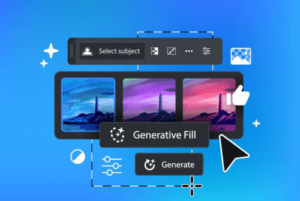Advanced research on GA-DRL, allows different vehicles to work together to complete difficult tasks. Vehicles complete complex tasks efficiently such as delivering packages, managing traffic issues and resolving routing problems. The main aim of this research is to enhance the capabilities of smart vehicles. This research was done by Zhang Liu, Lianfen Huang, Zhibin Gao, Manman Luo, Seyyedali Hosseinalipour, and Huaiyu Dai and published in the College of Information Engineering, Ningxia University one of the top Chinese Universities in Yinchuan, China.

The GA-DRL approach is used to transform the world with the help of AI. It focuses on task scheduling and resource allocations and improves decision-making ability vehicles. Their seamless coordination allows them to achieve complex goals, by enhancing the productivity of the system.
Highlighting Background Of AI Systems In Vehicles
Until now, vehicle systems perform simple tasks. They handle simple tasks such as delivering packages and navigating from one place to another using a predefined route. They lack collaborated and optimized systems.
Previous model perform tasks independently. They lack up-to-date data which reduces their productivity. Past research focused on making transportation simple for users. To surpass this limitation a new platform is utilized known as Vehicular clouds. This new research provides vehicles with scalability in real-time processing. This approach overcomes the previous limitation, faced by users, providing them with efficient results in real-time scenarios.
GA-DRL Approach Is Managing Complex Vehicle Tasks For Everyone
The present research use optimize approach by collaborating with different vehicles. They share information to know road hazards, weather conditions, and traffic areas. This much advancement in the system is gained by implementing AI and machine learning in the system, as the system is training on different datasets to operate efficiently. The vehicle has optimized routing and worked on improving user experience. It has transformed the world from simple means of transportation to advanced means of transportation.

This allows them to perform autonomous tasks. Analyzing complex problems allows them to lead with optimal solutions. It has revolutionized the world to perform up-to-date tasks such as assisting drivers while driving, pinpointing areas with traffic. It analyzes traffic areas from a large distance, which helps them to find the path with less traffic. Routes with less traffic are highlighted to save time.
This result shows GA-DRL’s performance is outstanding in completing complex tasks. GA-DRL approach was powerful to learn, adapt and execute the operation, in terms of efficiency and effectiveness.
Future Of AI In Vehicles
Future work will focus on refining decision-making ability. Using a hybrid approach along GA-DRL to obtain high-efficiency results. This will allow them to integrate advanced technology and Machine learning for outstanding performance. It will manage resources without compromising its performance. In future delays will be reduced to perform concurrent tasks. A security policy will be used to secure the privacy of the vehicles.

This research paper is available on arxiv.org. You can check their details from there. To check how GA-DRL algorithm works, you can view the GitHub code from here. The implementation of this research is not coded yet. Which means the code is not open source. It is a close source.
Application
It’s gonna be used in a diverse environment such as:
- Cloud Computing
- Edge Computing
- Internet of Things (IoT)
- Vehicular Networks.
- Data Analytics
- Scientific Computing
- Machine Learning and Deep Learning
- Multimedia Processing
- Supply Chain Management
- Smart Grids
Technical Information
GA-DRL is a technique that combines large technologies to improve task scheduling in a dynamic vehicle network. Let’s dive deeper into GA-DRL that has used graphical neural networks. GNN)is used to extract features for acyclic tasks. Creating a network in which each task is dependent on the other. A graphic neural network (GNN) improves visualization by focusing on the dependencies of each task over the other.
Analyzing these dependencies to understand the overall structure of the network. After this GA-DRL uses deep reinforcement learning(DRL) technique. It is a powerful technique that learns from experiencing different scenarios and then makes decisions based on rewards.

DAG task scheduling
Whereas in task scheduling GA-DRL understands how to assign tasks to vehicles in the most productive way. It focuses on different tasks like time completion, resource utilization, and gaining overall system performance.

Flow of Double DQN methodology.
Research Summary
Summarizing the technical details as first merging DRL with GNN is known as double deep learning. Then the team used another approach known as graph attention to capture the structure of the network. This helped GA-DRL to understand the crucial points and understand how interconnected they are with each other. DDQN is a component of GA-DRL that learns how to make optimum decisions by assigning tasks to vehicles.
All these approaches are done to achieve productive results. This approach was trained by assigning different tasks. Many errors and problems were faced during its learning process but in the end, it improved decision-making results.
It is concluded that GA-DRL moved from different evaluation processes to achieve successful results. This algorithm is tested on different networks to check its performance. It has maintained its performance and productivity efficiently. GA-DRL approach has created a smarter way to deal with problem.
Technical Results
A solid foundation of ideas builds the system model and formulates problems by using DAG subtask scheduling. Vehicle mobility, computational offloading model, and DAG tasks sets new rules to the world.
Researchers has evaluated networks for better performance, analyzing convergence and observing different parameters. The DAG task completion was a real success, replacing the existing system, and empowering complex problems.

Conclusion
I believe the researcher has done a great job using the GA-DRL approach which enhances system functionality without compromising on its performance. Supporting task scheduling in a dynamic environment. GA-DRL has achieved outstanding results for task allocation and traffic analysis. Achieve all its goals using GA-DRL by reducing completion time and increasing productivity.
You can view our latest blog here
Similar Posts
-
Discover the Best AI Image Generator Tools in 2024

-
Explore the 6 top Image-to-Video AI Tools to Add Amazing Artistic Touch

-
Best AI Music Generator Tools of 2024 Easily Accessible to Every Musician

-
Explore the Best Image2Image AI Models that Revamp Your Creativity

-
Explore the 10 Best Text to Image AI Tools that Generate Incredible Graphics

-
Google Health AI Tool: Empowering Health Management

